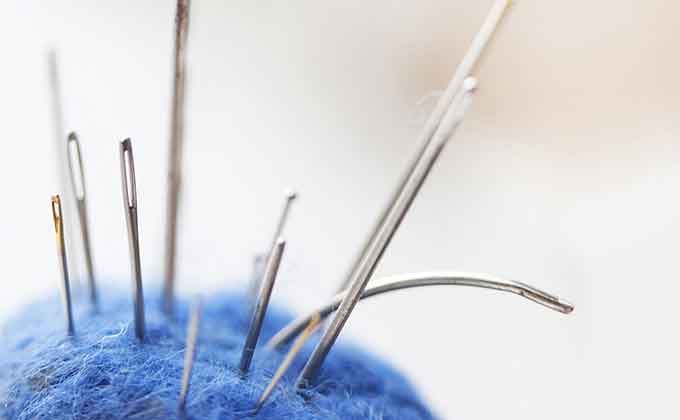
The Essential Guide to Embroidery Needles: History, Types, Uses, and More
Atmane BoukaiaShare
The Essential Guide to Embroidery Needles
Embroidery is a timeless craft that brings fabric to life with intricate designs and vibrant colors. At the heart of every embroidery project is a humble yet essential tool: the needle. Choosing the right needle can make a significant difference in your stitching experience. In this guide, we’ll explore the different types of embroidery needles, their uses, and tips for selecting the perfect one for your project.
Types of Embroidery Needles
-
Crewel Needles
- Description: Also known as embroidery needles, crewel needles have a medium-long eye, a shaft slightly thinner than the eye, and a sharp tip.
- Uses: Ideal for general surface embroidery, crewel work, goldwork, and whitework. Their sharp tip makes them perfect for piercing tightly woven fabrics.
-
Tapestry Needles
- Description: Tapestry needles have a long eye and a blunt tip.
- Uses: Primarily used for counted thread work like cross-stitch and needlepoint. The blunt tip helps avoid piercing the fabric threads.
-
Chenille Needles
- Description: Similar to crewel needles but with a larger eye and a sharp tip.
- Uses: Suitable for embroidery with thicker threads or ribbons. Their sharp tip is excellent for piercing heavy fabrics.
-
Milliners Needles
- Description: Long needles with a small, round eye and a sharp tip.
- Uses: Perfect for bullion knots and other wrapped stitches due to their uniform thickness.
-
Beading Needles
- Description: Very thin needles with a long eye.
- Uses: Designed for bead embroidery, these needles can pass through the small holes of beads easily.
Choosing the Right Needle
Selecting the right needle depends on the type of embroidery you’re doing and the fabric you’re using. Here are some tips to help you choose:
- Match the Needle to the Thread: Ensure the needle’s eye is large enough for the thread to pass through easily without fraying.
- Consider the Fabric: Use sharp needles for tightly woven fabrics and blunt needles for loosely woven fabrics.
- Experiment with Sizes: Needles come in various sizes. A general rule is that the lower the number, the thicker the needle. Try different sizes to see which one feels most comfortable for your project.
Caring for Your Needles
Proper care of your needles can extend their lifespan and ensure a smooth stitching experience:
- Store Needles Properly: Keep your needles in a needle case or a pincushion to prevent them from getting lost or damaged.
- Replace When Necessary: If a needle becomes bent, dull, or rusty, it’s time to replace it. A damaged needle can snag your fabric and thread.
- Clean Regularly: Wipe your needles with a soft cloth to remove any oils or residues that can accumulate over time.
Conclusion
Embroidery needles may be small, but they play a crucial role in the success of your projects. By understanding the different types of needles and their uses, you can choose the right one for each project, ensuring a pleasurable and efficient stitching experience. Happy stitching!